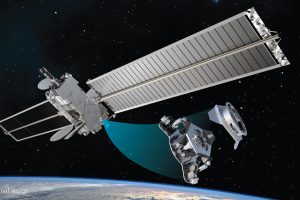With a focus on the speed and efficiency of system diagnostics, the partnership will involve using artificial intelligence (AI) and machine learning (ML) across product lifecycles. This positively impacts design and production phases of spacecraft development, says Lockheed, including applications on NASA’s Orion vehicle (pictured) for the Artemis mission.
“The power of AI is leveraged across our entire enterprise, and with a trusted partner like NEC, we gain the resources to expand its abilities at scale across our internal operations,” said Rick Ambrose, executive vice president of Lockheed Martin Space. “By proactively analyzing telemetry data we are able to deliver our systems even faster and streamline the work that our employees do every day.”
Detection
The companies have been evaluating the effectiveness of SIAT for early production testing and operational scenarios for a number of years. It allows Lockheed Martin “to drive proactive anomaly detection during the design, development, production and test phase of spacecraft development – even before applications in mission operations.”
NEC’s SIAT analytics engine uses data collected from sensors to learn the behaviour of systems, including computer systems, power plants, factories and buildings. This is then used for the system itself to automatically detect inconsistencies and prescribe resolutions.
By integrating within Lockheed Martin’s own T-TAURI (Technology for Telemetry Analytics for Universal Artificial Intelligence ) platform – described as a comprehensive time series analysis framework – the analysis can help provide a foundation for other technologies like system-level digital twins, says the company.
“Within a four-hour period, T-TAURI and SIAT built a model of the vehicle’s normal operations from nearly 150,000 sensors to establish over 22 billion logical relationships for analysis,” writes Lockheed. “The resulting models can be used to monitor all future tests of subsequent vehicles to compare expected and irregular behavior to analyze consistency and aid in regression analysis.”
See also: Orion spacecraft is ready for Moon orbit
 Electronics Weekly Electronics Design & Components Tech News
Electronics Weekly Electronics Design & Components Tech News




